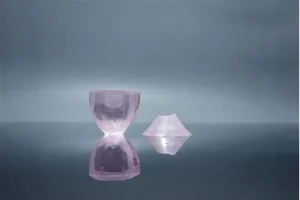Introduction
Crystals, with their unique and intricate structures, exhibit a range of optical properties that have fascinated scientists and researchers for centuries. From their refractive indices to their ability to display birefringence and dispersion, the optical characteristics of crystals play a pivotal role in various technological and scientific applications. In this article, we delve deep into the optical properties of crystals, discussing their refractive indices, birefringence, dispersion, and the underlying mechanisms that bring about these phenomena.
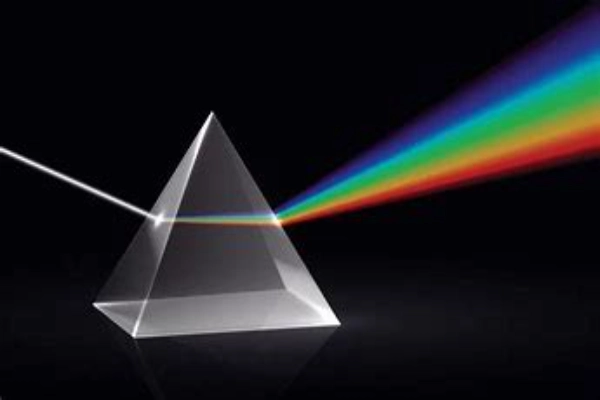
1. Refractive Index of Crystal
The refractive index, symbolized as ‘n’, is a crucial concept in the realm of optics and materials science. It essentially quantifies the change in speed of light as it transitions from one medium, such as air or vacuum, into another medium, in this case, a crystal. This change in speed is not just a mere physical alteration; it has profound implications. When light, which can be visualized as a collection of waves, encounters a boundary between two different media, it doesn’t just continue straight ahead. Instead, it bends, a phenomenon we term as refraction. The degree to which this bending or refraction occurs is governed by the refractive index of the material the light is entering.
Now, when we zoom into the microscopic world of crystals, things get even more intriguing. Crystals are not just solid chunks of matter; they are meticulously ordered structures where atoms, ions, or molecules are arranged in a repeating pattern extending in all three spatial dimensions. This meticulous arrangement is what gives rise to their unique properties, including their distinct refractive indices.
Several factors come into play when determining the refractive index of a crystal. First and foremost is the crystal’s density. In general terms, the denser a material, the more it can slow down light, leading to a higher refractive index. But it’s not just about sheer density; the nature of the atomic or molecular interactions within the crystal also plays a pivotal role. Stronger interactions can bind light more effectively, causing it to slow down more and thus increasing the refractive index.
Another influential factor is the crystal’s structure. As mentioned, crystals have a repeating pattern of atoms or molecules. The nature of this pattern, whether it’s simple or complex, can influence how light interacts with the material. Some structures may cause light to scatter in various directions, while others may allow light to pass through with minimal interaction.
Lastly, the wavelength of the incoming light is of paramount importance. Light, in its essence, is a spectrum, a blend of colors each with its own unique wavelength. Blue light has a shorter wavelength compared to red light. As these different wavelengths enter a crystal, they might not all slow down by the same amount. This differential slowing down of various colors of light is what leads to phenomena like dispersion, where white light entering a crystal can exit as a spectrum of colors.
In conclusion, the refractive index of crystals is a multifaceted property influenced by a myriad of factors. From the inherent structure of the crystal to the nature of the incoming light, each aspect plays its part in determining how light will interact with, and be altered by, the crystal.
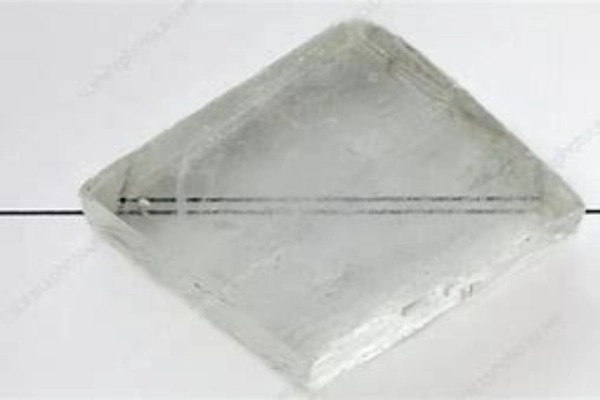
2. Birefringence in Crystals
Birefringence is one of the captivating optical properties exhibited by certain crystals. Imagine a beam of light, a collection of waves, entering a crystal and then, quite magically, splitting into two separate beams. Each of these beams takes its own distinct path, traveling at its own unique speed. This might sound like something out of a science fiction novel, but it’s a very real and well-studied phenomenon in the world of optics.
When we talk about birefringence, or double refraction as it’s sometimes called, we are essentially discussing a scenario where a single light ray entering a crystal gets divided into two rays. But why does this happen? The answer lies in the very nature of the crystal itself. Not all crystals are created equal. Some have properties that are uniform in all directions, while others have properties that differ depending on the direction you’re looking at. This direction-dependent variation in properties is termed as anisotropy.
Anisotropic crystals are like cities with roads of different widths and conditions. Just as vehicles might move faster on a broad, smooth highway compared to a narrow, bumpy alley, light rays too travel at different speeds depending on which “path” or axis they take within the crystal. When light enters such a crystal, it encounters these varying conditions. Depending on its angle of entry and the crystal’s internal structure, the light can split into two rays, each taking a different route. These rays, due to the differing conditions of their paths, travel at different speeds and bend, or refract, by different amounts.
But what causes this anisotropy in the first place? The answer lies in the atomic and molecular arrangement within the crystal. In anisotropic crystals, the arrangement of these atoms and molecules is such that the crystal’s properties, like its refractive index, differ along different axes. This non-uniformity is what gives rise to the phenomenon of birefringence.
In practical applications, birefringence is more than just a fascinating optical trick. It’s used in various technological applications, from LCD screens to advanced optical research. Understanding and harnessing birefringence allows scientists and engineers to manipulate light in novel ways, paving the path for innovations in communication, entertainment, and beyond.
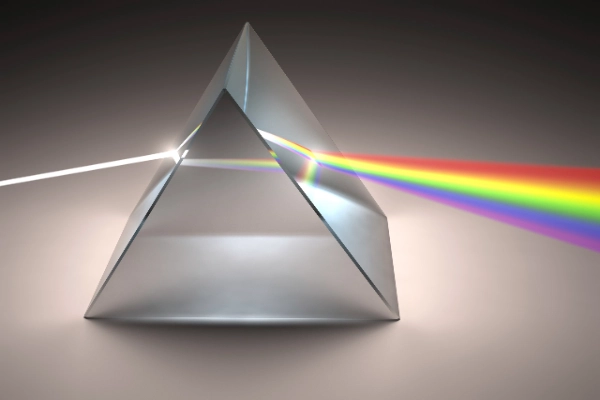
3. Dispersion Phenomenon in Crystals
Dispersion is a captivating optical effect that has captured the imagination of many, from poets inspired by the vibrant colors of a rainbow to scientists keen on understanding the underlying principles. At its core, dispersion is all about the dance of light – its interaction with matter and the subsequent play of colors that ensues.
Imagine a beam of white light. While it appears colorless to the naked eye, it’s actually a symphony of different colors, each with its own unique wavelength. When this white light encounters a medium that causes it to refract or bend, not all colors bend by the same amount. Blue light, with its shorter wavelength, refracts more than red light, which has a longer wavelength. This differential refraction causes the various colors to spread out, creating a spectrum. This is why, after a rain shower, droplets in the atmosphere can split sunlight into a beautiful rainbow.
Now, let’s delve into the world of crystals. Crystals, with their ordered structures and unique properties, interact with light in fascinating ways. One of these interactions leads to the phenomenon of dispersion. When light enters a crystal, its speed changes due to the crystal’s refractive index. However, this refractive index isn’t a constant value for all wavelengths of light. In most materials, including crystals, the refractive index varies with the wavelength. This means that as different colors of light, each with its own wavelength, pass through the crystal, they experience different degrees of bending.
For instance, in a crystal prism, blue light might be bent more significantly than red light. This causes the different colors to fan out, creating a spectrum. The result is a mesmerizing display of colors, much like a miniature rainbow within the crystal.
This property of crystals has been harnessed in various applications. From creating decorative crystal ornaments that shimmer with a spectrum of colors to advanced optical instruments that rely on the dispersion properties of crystals to analyze light, the phenomenon plays a pivotal role.
In essence, the dispersion phenomenon in crystals is a testament to the intricate ways in which light interacts with matter. It’s a dance of wavelengths, refractive indices, and the inherent properties of crystals, culminating in a visual spectacle that continues to inspire and intrigue.
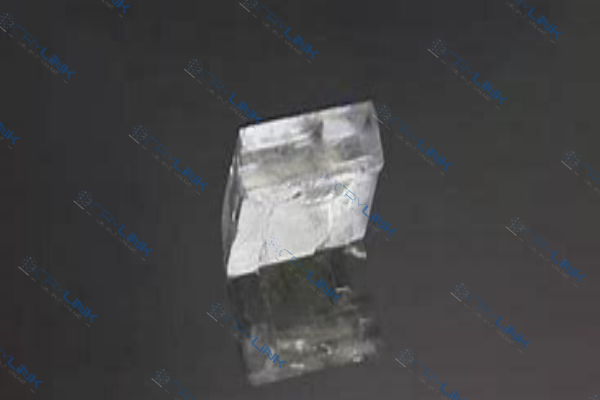
4. Role of Crystal Structure in Optical Properties
The atomic arrangement and bonding in crystals play a significant role in determining their optical properties. The periodic arrangement of atoms, the type of bonding, and the overall symmetry of the crystal structure can influence both the refractive index and birefringence.
5. Applications of Optical Properties of Crystals
Crystals, with their distinct optical properties, have carved a niche for themselves in both technological and scientific domains. Their ability to manipulate light in specific ways has led to innovations and advancements that touch various facets of our daily lives.
In the realm of technology, crystals are indispensable. Take, for instance, the screens of smartphones, tablets, and televisions. Many of these screens are LCDs – Liquid Crystal Displays. These displays utilize the light-modulating properties of liquid crystals to produce images. By applying an electric field, the orientation of the liquid crystals can be changed, thereby controlling the amount of light that passes through and creating the vibrant displays we see. Beyond screens, optical instruments, like certain microscopes and telescopes, employ crystals to enhance their performance. These instruments use crystals to filter, reflect, or refract light in specific ways, enabling clearer and more detailed observations.
On the scientific front, the optical properties of crystals are a treasure trove of information. Mineralogists study the birefringence and refractive indices of crystals to identify and classify minerals. In materials science, researchers investigate the optical properties of crystals to design new materials with desired characteristics, be it for solar cells, sensors, or other applications. Physicists, too, delve into the world of crystals, using them in experiments to understand fundamental properties of light and matter. For instance, nonlinear crystals are used to generate new frequencies of light, aiding in studies ranging from quantum mechanics to laser development.
In essence, the optical properties of crystals are not just a subject of academic interest. They have practical, tangible impacts, driving technological advancements and deepening our understanding of the world around us.
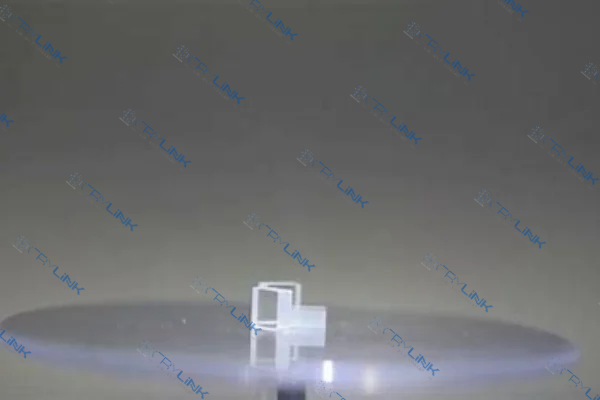
Conclusion
The optical properties of crystals, including their refractive indices, birefringence, and dispersion, are not just fascinating subjects of study but also have practical implications in various fields. By understanding these properties, we can harness the potential of crystals in numerous applications, pushing the boundaries of technology and scientific research.
Frequently Asked Questions (FAQs)
- Q1: What causes the refractive index to vary in different crystals?
A1: The refractive index varies due to differences in crystal density, structure, and the wavelength of incoming light. - Q2: Can all crystals exhibit birefringence?
A2: No, only anisotropic crystals (those with different properties in different directions) exhibit birefringence. - Q3: Why do we see a spectrum of colors in a prism?
A3: This is due to the dispersion phenomenon, where different wavelengths of light are refracted by different amounts. - Q4: How does the crystal structure influence its optical properties?
A4: The atomic arrangement, type of bonding, and symmetry of the crystal structure can influence both the refractive index and birefringence. - Q5: Are the optical properties of synthetic crystals different from natural ones?
A5: While the basic principles remain the same, the purity and structural perfection of synthetic crystals can lead to variations in optical properties compared to their natural counterparts.



